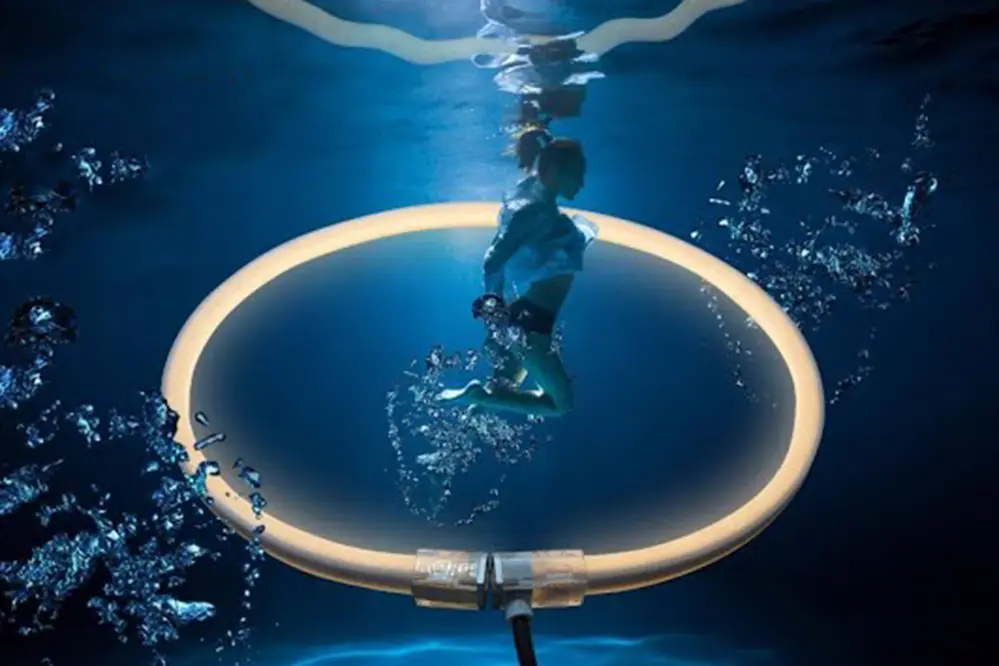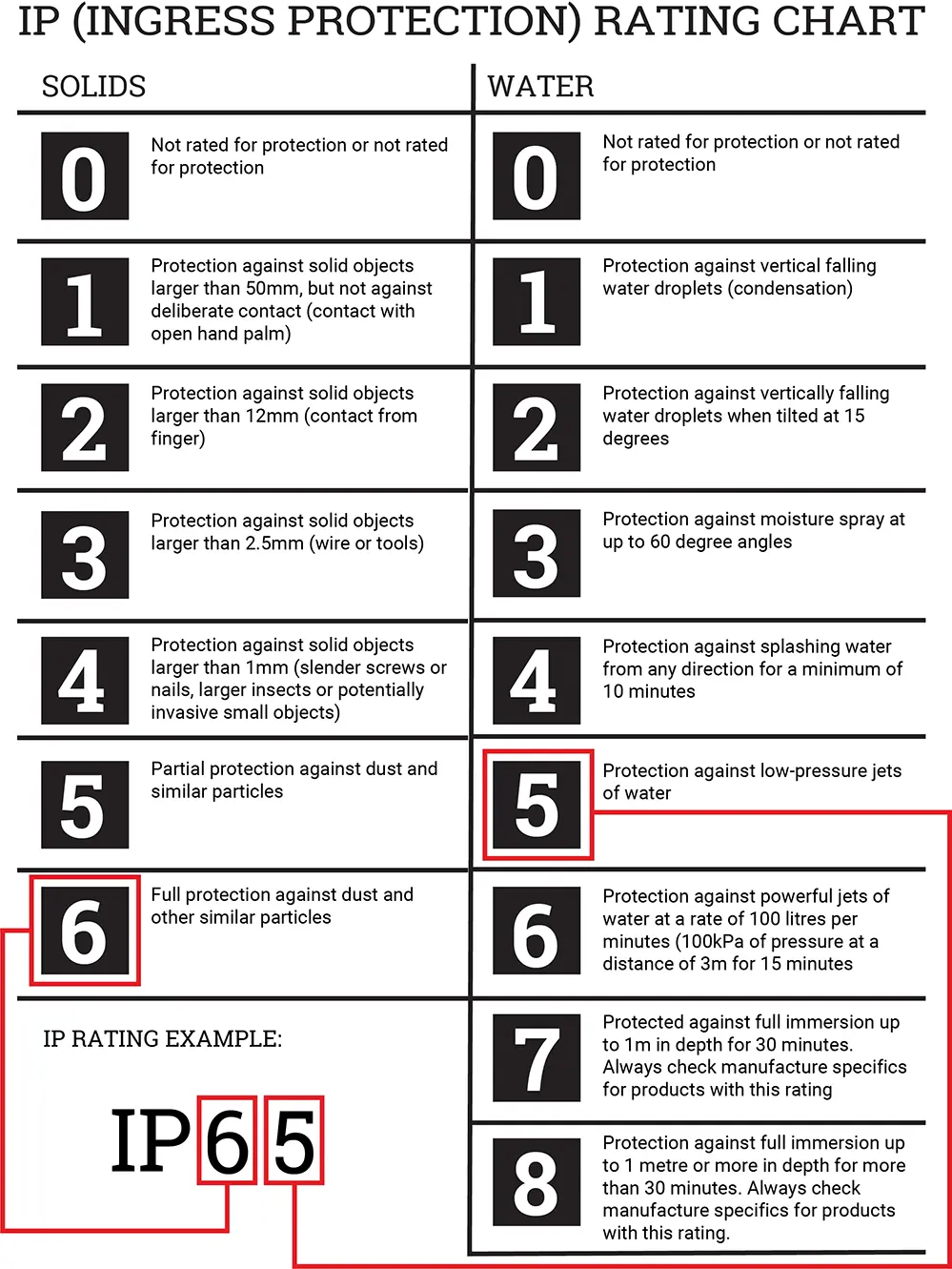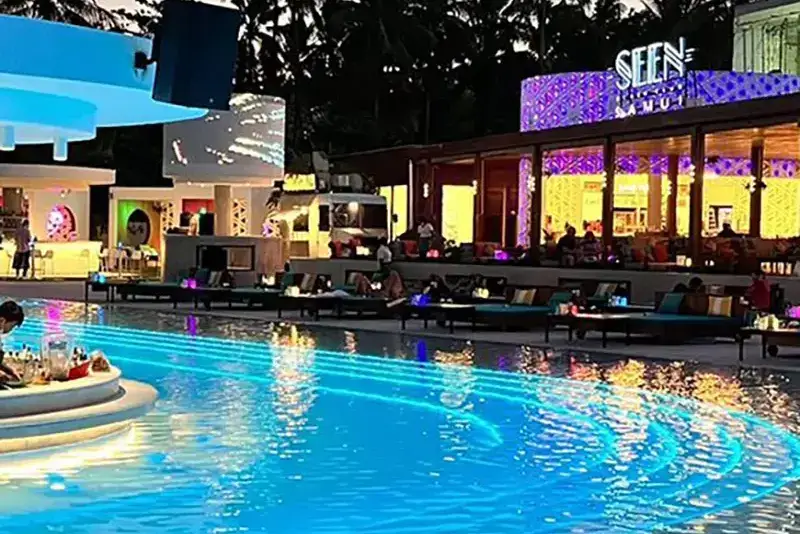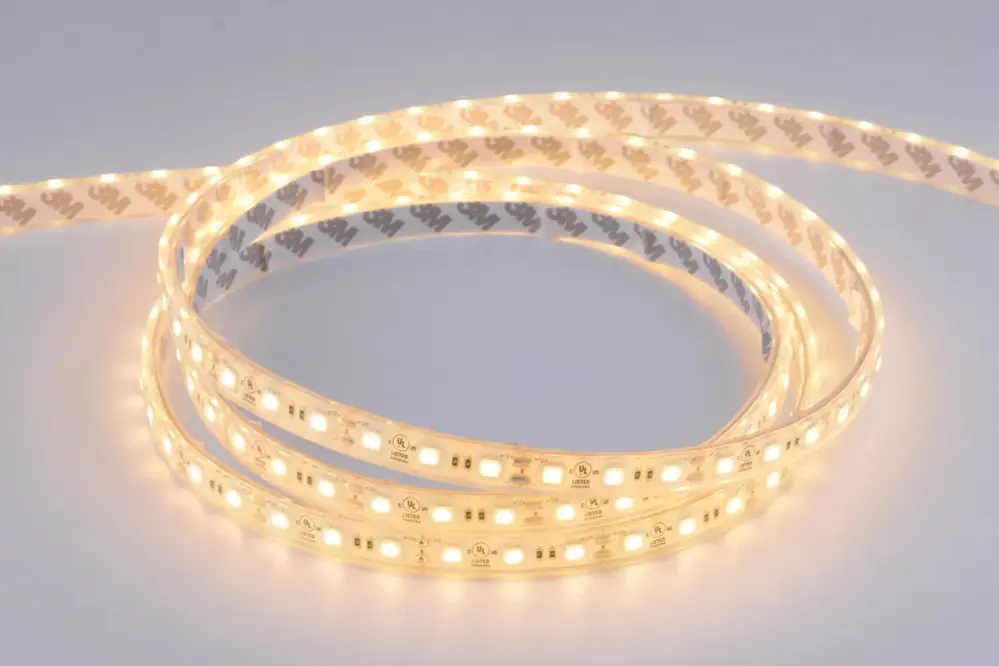Outdoor lighting has evolved dramatically over the years, and waterproof LED strip lights have become a game-changer for both enthusiasts and professionals. Whether you’re looking to illuminate your garden, patio, or any outdoor space, these versatile lights offer a blend of durability and aesthetic appeal. In this guide, we’ll explore everything you need to know about waterproof LED strip lights, from their various protection levels, including innovative nano coating techniques, to the best practices for installation. By the end, you’ll be equipped with the knowledge to make an informed decision for your next lighting project.
Waterproof LED strip lights come in a range of protection levels, each designed to withstand different environmental conditions. Understanding these levels is crucial for choosing the right type of strip light for your specific needs. From IP20, which offers no waterproofing, to IP68+, which can be submerged in water for extended periods, we’ll break down each category and explain the processes involved in making these lights waterproof. This detailed insight will help you select the perfect LED strip light that not only meets your aesthetic requirements but also stands up to the elements.
Allow me to introduce myself—I’m Tom, and I’ve been immersed in the LED lighting industry since 2005. With nearly two decades of experience, I’ve witnessed the evolution of LED technology and have specialized in LED strip lights. My extensive background has provided me with a deep understanding of the intricacies involved in creating high-quality, durable lighting solutions. This blog post is a culmination of my years of expertise, aimed at providing you with the most comprehensive guide to waterproof LED strip lights for outdoor use.
So, if you’re ready to transform your outdoor spaces with the perfect lighting solutions, let’s dive right in! This guide will walk you through everything you need to know, ensuring that your next project is both stunning and resilient.
Introduction to Waterproof LED Strip Lights

Waterproof LED strip lights are marvelous innovations.
Their unique ability to illuminate spaces under various conditions, combined with the precision of soldering each LED connection, makes them valuable. Whether one seeks to enhance the aesthetic of a serene garden or a bustling kitchen, these lights offer an adaptable and reliable solution. Waterproof LED strips enable one to effortlessly create captivating atmospheres that are both visually stunning and resilient against environmental factors.
They are exceptionally versatile and durable.
This guide promises to demystify the waterproofing process, particularly the use of epoxy resin for enhanced durability. By understanding the different levels of waterproofing, users can choose the right type for their specific needs. They will ensure maximum longevity and performance, even in the most challenging conditions.
With advancements in technology, today’s waterproof LED strip lights stand at the forefront of lighting solutions. They combine superior performance with innovative waterproofing techniques, making them a brilliant choice for both consumers and professionals.
Benefits of Waterproof LED Strip Lights
Waterproof LED strip lights open a world of possibilities for creative indoor and outdoor lighting. They provide immunity to moisture, rain, and even water immersion, enabling their use in diverse environments.
Their reliability ensures uninterrupted operation regardless of weather conditions. This makes them indispensable for areas prone to humidity and water exposure.
These lights can dramatically enhance safety by minimizing the risk of electrical hazards. Additionally, they elevate the ambiance of spaces with consistent, radiant light that remains unaffected by external factors, thus ensuring an enduring aesthetic appeal.
Furthermore, their durability translates to reduced maintenance costs and longer service life. This renders them ideal for professionals who require robust, long-lasting lighting solutions without compromising on quality. Whether for accentuating architectural features, lighting pathways, or adding ambiance, waterproof LED strip lights deliver unmatched performance and versatility.
What is IP Ratings? What does the numbers in IP Ratings mean?

IP ratings, short for Ingress Protection ratings, are a crucial measure of how well an electronic device is sealed against foreign substances such as dust and moisture. They offer an internationally recognized standard.
The IP rating consists of two digits.
The first digit of the rating indicates the level of protection against solid particles, ranging from 0 to 6.
The second digit signifies the degree of protection against liquids, spanning from 0 to 9.
For instance, an IP67 rating means that the device has the highest level of protection from dust and can withstand immersion in water up to a certain depth and duration.
Understanding these ratings can help consumers make informed decisions about the suitability of waterproof LED strip lights for various environments and conditions.
LED Strips IP Ratings Explained
Different IP ratings dictate distinct levels of water-resistance for LED strips, enhancing their usability in varied environments.
An IP20 rating means the strip is non-waterproof, suitable for indoor use. IP62 strips offer splash resistance, while more advanced options like IP65 employ a silicone coating for enhanced protection.
Progressing further, IP67 LED strips can be briefly immersed in water, while IP68 and IP68+ PU strips endure prolonged immersion, with advanced silicone/PU extrusion processes in molding.
IP20: Non-Waterproof Strips

An IP20 rating signifies non-waterproof—ideal exclusively for indoor applications where exposure to moisture is negligible.
Indoor applications thrive on non-waterproof strips, maximizing energy efficiency while providing ample luminosity without moisture interference.
IP20 strips offer no protection against liquids, making them unsuitable for kitchens or bathrooms, where splashes are common. These strips prioritize cost-effectiveness and ease of installation.
For environments free from water hazards—like living rooms or offices—IP20 strips provide excellent illumination, delivering consistent performance and cost-efficiency without the complexities of waterproofing technology.
IP62: Glue Dripping Process

IP62 LED strip lights achieve their splash resistance through a specialized glue-dripping process. This technique slightly alters the size but ensures enhanced durability and protection.
Renowned for their effective splash-proof capabilities, these strips are perfect for areas with light moisture exposure.
The glue-dripping method involves coating the LED strip with a layer of glue, which not only provides water resistance but also preserves the strip’s flexibility and brightness. This ensures a reliable performance without significant color shift or quality compromise.
Users seeking resilient and attractive lighting for settings such as kitchens or outdoor areas with minimal water exposure will find IP62 strips invaluable. By offering optimal protection against splashes, these strips underscore a harmonized blend of adaptability, efficiency, and aesthetics, fostering environments that demand both style and function.
IP65: Silicone Extrusion Process

IP65 LED strip lights achieve water resistance through a silicone extrusion process. This innovative method ensures enhanced protection against splashes and minor water exposure, maintaining aesthetic quality.
Tiny size changes occur without color shifts. It results in robust protection.
During the silicone extrusion process, the silicone material envelops the LED strip, providing a consistent, durable layer that shields against water while preserving the strip’s brightness and flexibility.
These high-quality strips are ideal for environments requiring reliable, water-resistant lighting, such as bathrooms and patios, ensuring excellent performance and longevity. Utilizing the IP65 rating, users can confidently install these LED strips in areas exposed to occasional splashes, relying on the cutting-edge silicone protection to maintain their integrity and functionality.
IP65H: Heat Shrink Tube

IP65H strip lights embody the effective application of the heat shrink tube method.
Whereas IP65 uses silicone extrusion, IP65H employs a heat shrink tube to achieve anti-splash water resistance, ensuring no color shift and maintaining tiny size changes. This process involves enveloping the LED strip in a heat-activated shrink tube, which tightly adheres to the strip upon exposure to heat.
Consequently, this method provides a robust waterproofing solution while preserving the flexibility and brightness of the LEDs. It ensures that the lighting component remains durable under conditions that expose it to occasional splashes.
The heat shrink tube technology not only simplifies the installation process but also enhances the strip’s resilience. It’s an ideal choice for those seeking reliable, waterproof lighting solutions in versatile environments, confident in the system’s ability to uphold the LED strip’s performance even under challenging conditions.
IP66: Silicon Tube Process

The IP66 rating signifies strong protection against sprayed water and tiny color shifts.
Introduced to meet rigorous outdoor lighting requirements, the IP66 waterproof LED strip lights employ the silicon tube process. This method ensures the LED strip is encased in a durable silicon tube, providing excellent resistance to water sprays from any direction.
The silicon tube encasement is both flexible and reliable, making the IP66 strips suitable for a wide range of applications including patios, gardens, and other outdoor settings where water exposure is prevalent yet brief.
In addition, the silicon material used in the IP66 process offers a perfect balance between durability and transparency, maintaining the brightness and overall visual appeal of the LED lights. This makes it an ideal choice for aesthetic outdoor lighting solutions.
With this protection level, one can confidently install IP66 LED strip lights, knowing they can withstand adverse weather conditions while illuminating spaces effectively.
IP67: U-Shape Tube with Glue Pouring

The IP67 waterproof rating signifies that the LED strip can be immersed in water for short periods.
- Enclosure: The strip is encased in a U-shaped tube.
- Glue Pouring: Silicone Glue is poured around the strip within the tube.
- Protection: Ensures protection against water immersion for brief durations.
- Durability: The glue pouring method increases the robustness of the LED strip.
- Application: Ideal for areas with significant water exposure but not for extended immersion.
This protective layer ensures that the strip maintains functionality even when submerged temporarily.
Such a construction makes IP67 suitable for environments like bathrooms and fountains, enhancing lighting reliability.
IP68: U-Shape Tube with Glue Injection

The IP68 rating represents the pinnacle of waterproofing, making the LED strip ideal for prolonged water exposure.
In this configuration, the LED strip is encased within a sturdy U-shaped tube, and glue is injected into the tube surrounding the strip. This method provides enhanced protection against long-term submersion, ensuring the LEDs inside remain unaffected by any aquatic conditions, making it the most resilient option for underwater applications.
Remarkably, this design results in a completely sealed environment for the strip light. By injecting glue, manufacturers attain an exceptional level of waterproofing, capable of sustaining the strip’s operation even in fully submerged scenarios without compromising the light’s functionality.
This meticulous approach to waterproofing allows for continuous, vibrant illumination in harsh environments such as pools, marine applications, or ornamental water installations. Consequently, the IP68 rating confers unmatched durability and performance, making these LED strips a superior choice for high-moisture locations requiring reliable lighting solutions.
IP68+ PU: Silicone/PU Extrusion Process

The IP68+ PU rating signifies the highest level of waterproofing, embodying a silicone or polyurethane extrusion process in molding. These materials provide enhanced durability against prolonged water exposure and harsh environmental conditions.
This meticulous process ensures that each LED strip is carefully encased, rendering it impervious to external moisture influences. It’s an outstanding solution designed for extended submersion and robust outdoor applications.
Manufacturers employ advanced silicone or polyurethane/PU glue to achieve seamless encapsulation. This technique guarantees maximum protection, maintaining the strip’s integrity even under significant water pressure.
Because the extrusion process is precise, it offers uniformity and reliability. This translates to superior performance and extended longevity for the LED strips in the most demanding aquatic settings.
Moreover, it allows for exceptional operational stability in environments such as fountains, aquariums, and underwater pathways. The IP68+ PU rating reassures users of both the product’s resilience and enduring brightness.
Ultimately, this level of waterproofing represents the pinnacle of innovation in LED technology. It ensures that the illuminating beauty of LED strips remains vibrant and reliable, even beneath the water’s surface.
Choosing the Right Waterproof LED Strip Light

Selecting the appropriate waterproof LED strip light is crucial to ensure optimal performance and durability in various environments. Consider the specific IP ratings, as each denotes a different level of protection against water intrusion.
Each IP rating from IP20 to IP68+ PU offers tailored solutions, from slight moisture resistance to submersion. Matching the right rating to the intended use will maximize the light’s lifespan and effectiveness.
Consider Your Environment
Selecting the correct rating is crucial.
When it comes to waterproof LED strip lights, the environment plays a critical role. Different settings demand varying degrees of water resistance, and matching these requirements to the appropriate IP rating is essential for optimal performance. For instance, outdoor patios might need weather-resistant strips, while pools or fountains require systems that can withstand direct immersion.
Assess climatic conditions.
Consider the intensity and frequency of water exposure. Is the LED strip likely to encounter occasional splashes, or is it frequently submerged? Outdoor environments might also involve extreme temperatures, which demand specialized materials.
Identify vulnerable areas.
Certain parts of the installation might be more prone to exposure than others, such as edges near water sources. Ensuring these sections are well-protected will enhance the longevity and reliability of the LED strips.
By thoroughly assessing the intended environment, users can make informed decisions about the most suitable waterproof LED strip light for their needs. This approach not only extends the lifespan of the product but also ensures consistent and brilliant illumination.
Determine the Application
Selecting the suitable waterproof LED strip light requires understanding the specific application needs and environmental conditions. Therefore, it is crucial to define where, how, and why the strips will be used.
Different settings call for distinct waterproof ratings to guarantee optimal functionality.
One should consider whether the strips will face occasional splashes, such as in a bathroom, or continual immersion, as found in pools or fountains. This evaluation influences the choice of waterproof rating, ensuring effectiveness and durability.
For instance, IP20-rated strips are non-waterproof and best suited for indoor, dry spaces. Conversely, IP68+ PU-rated strips can be immersed in water for extended periods, making them ideal for underwater applications. By strategically aligning the waterproof rating with the intended use, users can achieve both technical excellence and aesthetic brilliance.
Installation Tips for Waterproof LED Strip Lights
Installing waterproof LED strip lights requires careful planning and meticulous attention to detail, ensuring durability and optimal performance, especially in wet environments.
Firstly, ensure the power supply and connectors are suitable for outdoor use.
For installations in wet locations, it’s crucial to seal connections properly. Weatherproof connectors, shrink tubing, and waterproof adhesives are essential tools to protect the connections against moisture, maintaining uninterrupted functionality.
Mount the strips on a clean, dry surface to secure optimal adhesion. Using mounting clips or channels can provide additional support, especially in demanding outdoor conditions. For areas with direct water exposure, verify that all tiers of protection (e.g., waterproof coatings, silicone casing) are fully intact. By following these tips, users can effectively enhance the lifespan and reliability of their waterproof LED strip lights.
Maintenance and Care
Proper maintenance maximizes your waterproof LED strip lights’ lifespan.
Regularly inspect the strips for any signs of damage. Pay close attention to any issues around the connectors and power supply, as these areas are particularly susceptible to moisture ingress. Additionally, ensure that there is no debris or dirt accumulation on the lights, which could affect their brightness and overall performance.
Check for loose connections periodically.
Cleaning is straightforward but essential. Use a soft, damp cloth to gently wipe the surface – if the lights are marked IP67 or higher – and ensure no abrasive materials come into contact with the strip.
Remember that investing time in regular upkeep not only extends the functional life of your waterproof LED strip lights but also preserves their aesthetic and performance quality. As technologies evolve, keeping abreast of best maintenance practices will ensure you continue to enjoy vibrant, reliable illumination for years to come.
Frequently Asked Questions About Waterproof LED Strips
Why choose waterproof LED strip lights?
Waterproof LED strip lights offer versatile illumination solutions that withstand various environmental challenges, ensuring durability and performance in both residential and commercial outdoor spaces. Their resilience against water and moisture makes them ideal for patios, gardens, and pool areas.
Rain or shine, these lights maintain their integrity and brightness, providing consistent ambiance. Their build quality prevents any disruptions caused by weather conditions, thereby guaranteeing reliable lighting for extended periods.
Beyond practicality, waterproof LED strip lights bring aesthetic appeal to exterior design. They can be seamlessly incorporated into landscaping projects, enhancing the visual appeal of any property.
The varying levels of water resistance, from IP20 to IP68+, meet diverse needs ranging from basic splash protection to submersion capabilities. This range allows for custom applications aligned with specific environmental requirements.
Overall, the investment in waterproof LED strip lights pays off in longevity and reduced maintenance costs. The robust design ensures they continue to function optimally, adding a reliable touch to outdoor lighting solutions.
Ultimately, choosing these lights isn’t just about weather resistance. High-quality waterproof LED strips also offer energy efficiency, vibrant colors, and flexible installation options.
Can waterproof LED strips be used indoors and outdoors?
Yes, waterproof LED strips can be used both indoors and outdoors. They are particularly suited for areas exposed to moisture, such as kitchens, bathrooms, gardens, and pool areas. Ensure the chosen IP rating matches the environmental conditions to guarantee optimal performance and longevity.
How to tell if LED strip lights are waterproof?
Ensuring LED strip lights are suitable for outdoor use is crucial for longevity and performance. One should look at the Ingress Protection (IP) rating on the packaging or product description.
The IP rating typically consists of two digits; the first digit represents protection against solids, while the second is for liquids. For outdoor waterproofing, the second digit is especially important.
Common ratings include IP65, IP66, IP67, and IP68, each offering varying degrees of water resistance. IP65, for example, guards against water jets, while IP68 can handle prolonged submersion.
Additionally, physical inspection of the LED strip can reveal water-resistant features, such as silicone coatings or U-shape tubes filled with glue. These details are imperative for verifying the appropriate level of protection.
Understanding these ratings and visual cues ensures that the chosen LED strip light will endure the elements and provide reliable outdoor illumination.
Can waterproof LED strips be cut?
Indeed, waterproof LED strip lights can be cut. However, it is essential to understand the implications of doing so, especially if preserving their waterproof integrity is paramount. When a cut is made, the protective layers that safeguard the LEDs from water exposure are compromised. This means that immediate steps must be taken to reseal the cut ends to maintain their waterproof properties.
Re-sealing the strips can be done with appropriate materials, such as heat shrink tubes or silicone glue. These materials will help in restoring the waterproof nature of the strips to some extent.
Nevertheless, the process of resealing does require a certain level of precision. Care must be taken to ensure that no sections are left exposed.
When cutting waterproof LED strips, one must follow the manufacturer’s guidelines. Typically, these guidelines will indicate the exact spots where cuts can be made safely.
It is recommended to use connectors designed for waterproof LED strips where possible. These connectors help in maintaining a secure and waterproof connection between cut pieces.
In conclusion, while cutting waterproof LED strips is feasible, extra caution and proper resealing actions are necessary. This ensures that the strips remain functional and protected against water damage.
Where to use waterproof LED strips?
Waterproof LED strip lights can transform outdoor patios into mesmerizing spaces, providing both practical illumination and aesthetic appeal. They are ideal for accentuating landscaping features, such as gardens or walkways.
The versatility of these lights allows for creative installations along staircases, enhancing safety during night hours. Additionally, the waterproof nature makes them suitable for pool areas.
Homeowners can install waterproof LED strip lights along driveways to improve visibility and add a touch of sophistication. These lights can withstand various weather conditions.
Boaters often use these lights to illuminate deck spaces, ensuring safe navigation and entertaining ambiance. Their durability in marine environments is unparalleled.
For festive decorations, waterproof LED strips wrap around trees, railings, and gazebos, creating a magical atmosphere for holidays or special events. Their robust design ensures longevity.
Finally, installing these lights under eaves or awnings adds elegance to any home. Their brightness can highlight architecture while maintaining energy efficiency.
Conclusion
Understanding waterproof ratings is vital. This guide has elucidated the complexities of waterproof LED strip lights. By comprehending the intricacies of IP ratings, from IP20 to IP68+, one can select the appropriate type for all manner of lighting projects. Consequently, using the right rating ensures both the durability and functionality of the LED strips in various environments. By adhering to this guide, both residential and commercial spaces can benefit from innovative, durable, and aesthetically pleasing lighting solutions that stand the test of time. With waterproof LED strips, investing in quality ensures enhanced ambiance, increased safety, and lasting satisfaction for all lighting endeavors.
For those looking to source high-quality LED strip lights, consider reaching out to Unitop, a professional Chinese manufacturer specializing in LED strip lights and LED neon strips. With their expertise and commitment to quality, Unitop can provide the perfect lighting solutions tailored to your specific needs. Contact Unitop today to explore their extensive range of products and elevate your lighting projects to new heights.





